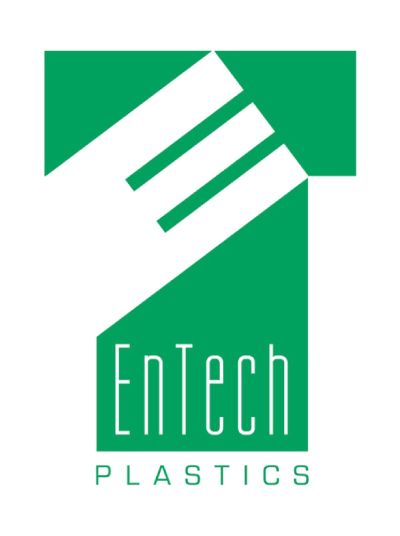From Problem Parts to Perfect Components: How to Troubleshoot Injection Molding Quality Issues
Every production run tells a story, and sometimes, that story involves parts that don't quite meet specifications. Whether you're dealing with warped components, surface defects, or dimensional inconsistencies, injection molding quality issues can disrupt your operations and strain your bottom line.
The good news? Most molding defects follow predictable patterns, and with the right diagnostic approach, they're solvable. Let's walk through a systematic troubleshooting framework that transforms problem parts into perfect components.
Understanding the Root Cause: Beyond Surface-Level Fixes
When quality issues emerge, the instinct is often to adjust machine parameters immediately. But rushing to solutions without proper diagnosis can create new problems or mask underlying issues. Effective troubleshooting requires understanding the relationship between four critical variables:
- Material properties – How the resin responds to heat, pressure, and cooling
- Tool design – Gate location, venting, cooling channel efficiency
- Process parameters – Temperature, pressure, injection speed, and cycle time
- Machine capability – Tonnage, shot size, and control precision
Quality defects rarely stem from a single source. Instead, they emerge from the interaction between these elements; this is why systematic diagnosis beats guesswork every time.
Common Defects and Their Diagnostic Pathways
Warpage and Dimensional Instability
Parts that twist, bow, or fail to hold tolerances point to uneven cooling or internal stresses. Start by examining cooling channel performance—are all areas of the tool reaching uniform temperatures? Inconsistent wall thickness can also create differential shrinkage, as thicker sections cool more slowly than thin areas.
Consider your material selection as well. Some engineered resins exhibit higher shrinkage rates or are more sensitive to processing conditions. Process adjustments often focus on pack pressure, hold time, and mold temperature. Increasing pack pressure and hold time ensures adequate material in the cavity as the part cools, while optimized mold temperature promotes uniform crystallization in semi-crystalline resins.
Short Shots and Incomplete Fill
When parts don't completely fill—leaving unfilled sections or thin areas—the investigation typically begins with material flow. Is the material reaching all areas of the cavity before it solidifies?
Gate location plays a crucial role here. A gate positioned too far from thin-walled sections may allow material to freeze before complete fill. Flow analysis during the tool design phase helps identify potential issues, but sometimes real-world conditions reveal opportunities for optimization.
Material temperature, injection speed, and machine tonnage all influence fill quality. Under-tonnage situations prevent adequate clamping force, allowing material to flash rather than fill properly. For low-volume, high-tonnage applications—where part geometry requires substantial clamping force—ensuring your press matches the application is essential.
Surface Defects: Flow Lines, Sink Marks, and Blemishes
Surface quality issues often trace back to material flow behavior and cooling dynamics. Flow lines appear when material enters the cavity at different temperatures, creating visible boundaries. Increasing material temperature and injection speed typically improves flow front uniformity.
Sink marks occur when thick sections or ribs cool unevenly, pulling material inward as it contracts. Strategic use of gas-assisted injection molding can address this challenge by maintaining internal pressure during cooling, preventing surface depression without requiring excessive pack pressure.
Surface blemishes might also indicate contamination, moisture in the resin, or venting issues. Proper material drying prevents moisture-related defects like splay or silver streaking.
The Systematic Troubleshooting Process
Rather than making multiple changes simultaneously, effective troubleshooting follows a disciplined approach:
- Document current conditions – Record all process parameters, material lot numbers, ambient conditions, and specific defect characteristics. Consistent documentation creates a baseline for comparison.
- Isolate variables – Change one parameter at a time, allowing several cycles to stabilize before evaluating results. This approach identifies which adjustments actually improve quality versus those that have no effect or make things worse.
- Verify material specifications – Confirm you're running the correct resin grade with proper drying and handling. Material inconsistencies can mimic process problems, sending troubleshooting efforts down the wrong path.
- Examine the tool – Inspect gates, vents, and cooling lines for wear, blockages, or damage. A poorly maintained tool creates problems no amount of process adjustment can overcome.
- Consider the machine – Verify shot size capacity, tonnage adequacy, and control system accuracy. Machines operating at the extreme edges of their capability struggle to deliver consistent quality.
Prevention Through Engineering Excellence
The most effective quality strategy isn't troubleshooting problems after they emerge—it's preventing them through thoughtful engineering upfront. Flow simulation reveals fill patterns, weld lines, and air trap locations. Material selection guided by application requirements ensures the resin matches the performance demands. Working with a partner who understands both the art and science of injection molding means fewer problem parts and more perfect components from the start.
Moving Forward with Confidence
Quality issues will emerge—that's the reality of manufacturing. But with systematic diagnostic approaches, technical expertise, and a commitment to continuous improvement, those challenges become opportunities for refinement rather than roadblocks to success.
Whether you're troubleshooting current production or planning a new project, the key is partnering with a team that brings both technical depth and practical problem-solving experience to every component.
At EnTech Plastics, we've built our reputation on turning complexity into capability. From our Corry, Pennsylvania facility, we deliver precision-engineered custom injection molding solutions for medical, industrial, trucking, and consumer applications—backed by decades of engineering excellence and technological innovation.
Have a challenging part that's been causing headaches? Let's talk about transforming those problem parts into perfect components. Contact us today to discuss your project.
Be The First to Know!
Enjoying this article? Stay up to date and sign up now to get notified of new news and insights from EnTech Plastics.
